Written by Jiwon Lee, Busan, South Korea
“전 세계 바다가 우리의 실험실 (The World’s Ocean, our laboratory)”
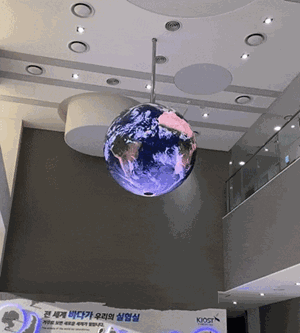
The first time I went to KIOST, a maritime cluster located in Busan, I was deeply moved by its slogan. The phrase “the world's oceans are our laboratory” reflects its oceanographers' approach to the ocean. Seeing and respecting the ocean as a subject of curiosity and exploration has changed my attitude toward the sea. Home to a diverse array of life, including mammals, fish, benthic organisms, and crustaceans, the ocean is also the cradle of humanity and must be protected and conserved. Climate change is currently taking away the largest parts of the planet, severely impacting the earth. The climate crisis causes ocean acidification, ocean warming, and sea level rise. I applied to the 9th Korea Arctic Academy to learn how I can contribute in this challenging situation and to expand my understanding of the ocean.
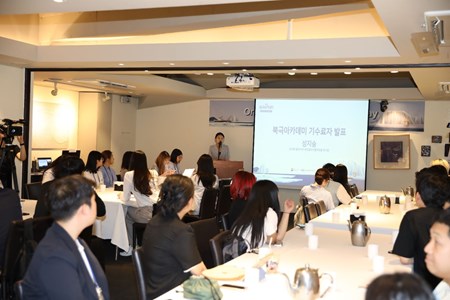
The KAA program began with the orientation and homecoming Day in Seoul. Although it was unfortunate that I couldn't meet the global participants in person due to COVID-19, I was able to watch their self-introduction videos. It was a big motivation for me as I saw people continuing their studies in Scandinavian countries that I had never been to, such as Sweden, Finland, and Norway. Majoring in Chinese Literature, I had a lot of trouble deciding what field I should major in the study of the Arctic and polar region. But during the lecture from previous graduates, I was able to think about my career path.
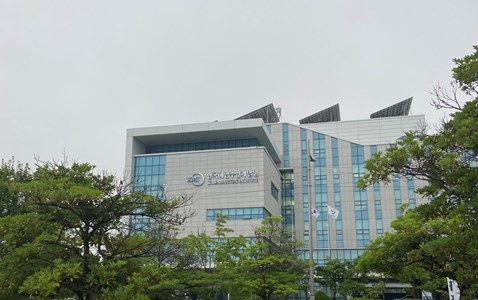
The Arctic Academy at KMI encompassed a diverse range of topics related to the Arctic. It was valuable and meaningful because I was able to build knowledge in a wide range of fields, such as science and technology of the polar region and the ocean, Arctic policies by country, and indigenous people and their culture in the Arctic. The lecture covers both the positive and negative aspects of the changes that climate change is bringing to the Arctic. The positive consequences, including crude oil and mineral mining, freshwater resources from glaciers, and Arctic shipping routes were explored alongside the negative impacts such as the threats to the lives of Arctic indigenous peoples and the destruction of Arctic ecosystems.
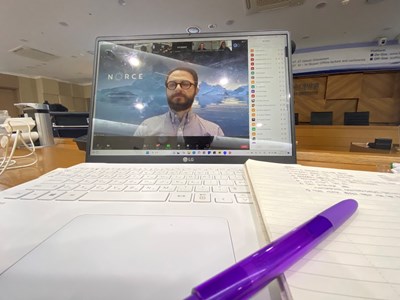
Among the academy attendees, I was thrilled to meet Lee Beom-Seok, who previously participated in the research team at the King Sejong Station in the Antarctic. Because I read his article when I was working as a student reporter at the KOPRI last year. Also, Dr. Jaehak Lee, who gave a lecture on the theme of marine environmental changes, wrote a book called ‘Climate Change and the Sea’ that I read. It was truly inspiring to encounter people who I saw their name as the authors of the book while studying the ocean and polar regions.
The day before the Lecture from the Swedish embassy, there was breaking news that Turkey would ensure the ratification of Sweden in NATO. It was an honor to be with Arctic Academy at this historic moment. Since I chose the 'China and Russia's cooperation in the Arctic' as the topic for the presentation, I had to update my presentation content.
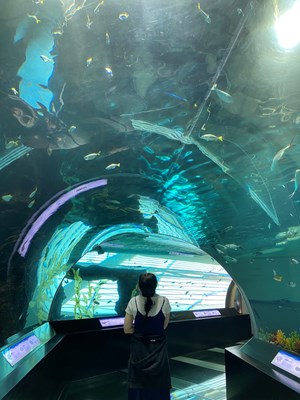
In the 'Maritime Cluster' various institutes involved in the maritime and fisheries sectors gather to exchange information and cooperate on technology, in addition to KMI. During break time during KMI class, I visited the National Maritime Museum with other participants. In this place where maritime cultural heritages are exhibited, an exhibition is underway with the theme of ‘God of the Sea’. The ocean is a realm of wonder and unpredictable danger. Ancient people wished for safe sailing by praying to god such as Poseidon of Greek myth, Sedna of Inuit, Jiāorén of China, Nu of Egypt, and Tiamat of Babylon. In the museum, I experienced diverse marine cultures inherited from the past and read some books from the maritime library.
During the KAA program in July, record-breaking heavy rain continued in Korea. The torrential downpours led to collapsed embankments, landslides, and flooded an underground tunnel, even resulting in tragic losses of life. The Korea Meteorological Administration introduced a new concept called ‘extremely heavy rain’ to warn and prepare for changes that Korea will face due to the global climate crisis. Climate change becomes even closer to our daily life. Just as the ancestors prayed for peaceful weather and safety to the god of the sea, I wrote a wish that we could overcome the dangers of the climate crisis.
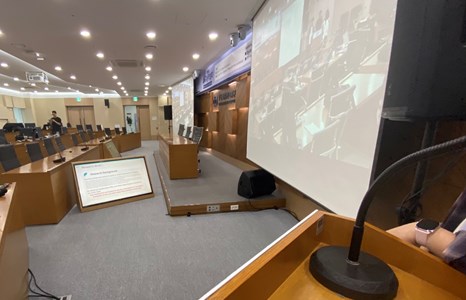
For the presentation, all the participants put their best effort into reviewing recent research, writing scripts, and creating presentation materials. I was able to learn a lot while preparing for the presentation that I lacked in the undergraduate course. Lee Kyung-ho, a master's student at the KOPRI explained the research methodologies, framework process, and how to collect the specimens to me. Lena, the only on-site global participant, helped me find the statistics I needed from the Russian newspapers. I learned a lot not only from the presentation itself, but from the process of preparing and communicating with global attendees.
Although I was quite nervous on the day of the presentation, it was rewarding to share my preparations with both online and on-site students. It was also beneficial to hear presentations from other attendees. The presentations on the soundscape and the water infrastructure in Greenland were impressive. Also, through the presentation, I became interested in the culture and language of the Sámi people. As a Chinese major, I was curious about the characteristics of their language. I asked about the current state of preservation of (in)tangible cultural heritage and linguistic features to presenters. I've studied policies for protecting ethnic minorities and preserving culture in China. Now I'm intrigued by the Sámi people and I will continue to research their culture.
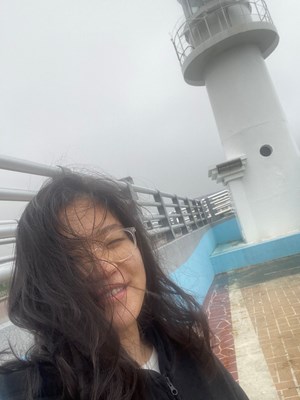
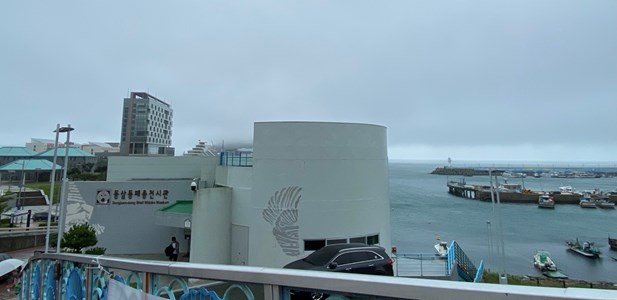
On the last day, I was sad to go back after studying, so I walked along the coastal promenade. Despite the heavy rain and strong wind, it was meaningful to explore the beautiful Yeongdo island. Yeongdo is well-known for the ‘Dongsam-dong shell midden’ in addition to maritime and fisheries-related institutions such as KMI, KIOST, and Korea Maritime & Ocean University. Shell middens are created by ancient people consuming shellfish from the sea and discarding them. The obsidian stoneware excavated in the site provides evidence of cultural exchange with Kyushu, Japan. I visited Dongsam-dong Shell Midden Museum located in the major Neolithic site in Korea before the class begins.
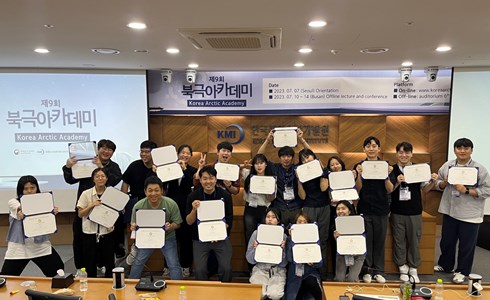
The lectures and presentations at the 5-day academy inspired me. It broadened my cultural understanding through meeting people from diverse regions like Korea, Russia, Scandinavian countries, the Middle East, and the Americas. I had the opportunity to attend various lectures, ask questions, and build up knowledge about subjects I didn't know, such as Arctic indigenous people. I am proud to have completed this enriching experience. I hope to have global attendees together in Busan, next year. For anyone who is interested in the Arctic, please never hesitate to get this opportunity.
